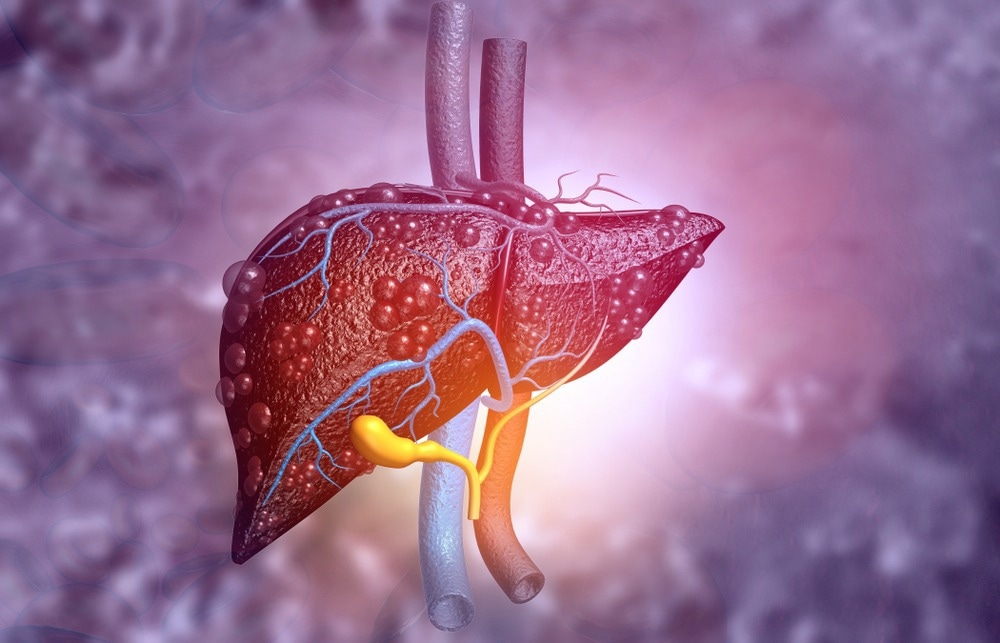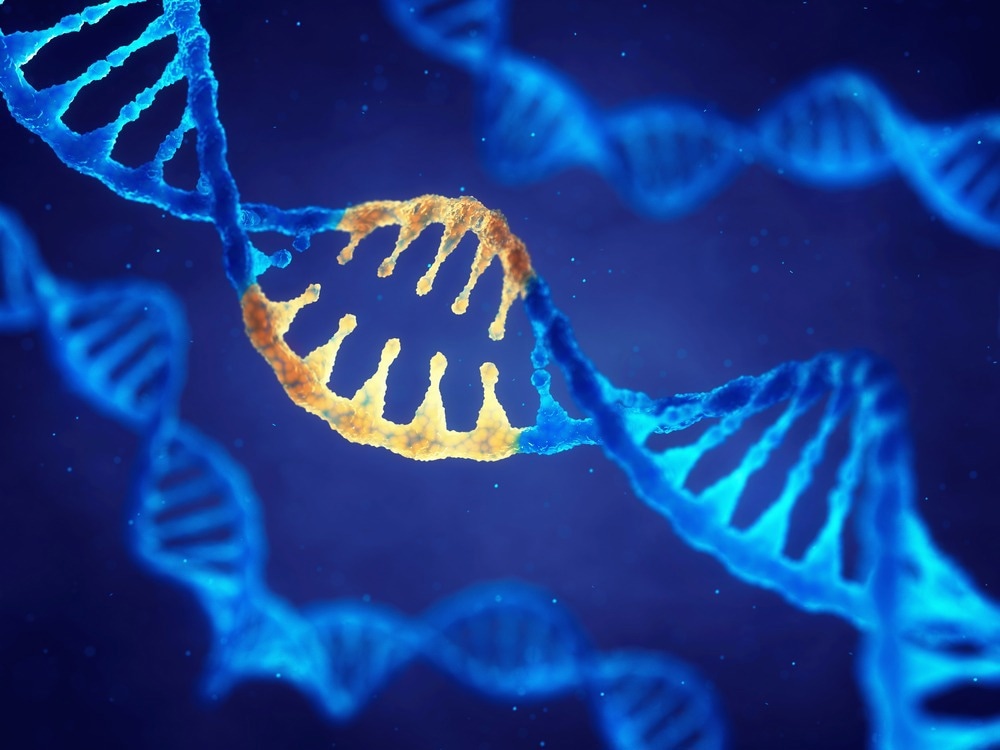History
Urea cycle disorders (UCDs)
Causes and symptoms
CPS1 gene
Diagnosis and treatment
References
Further reading
Carbamoyl phosphate synthetase I (CPS1) deficiency (CPS1D), a rare type of urea cycle disorder (UCD), arises from an inborn error of metabolism. It is a genetic disorder of the CPS1 enzyme and follows the autosomal recessive mode of inheritance. CPS1D often leads to multiple episodes of hyperammonemia, i.e., toxic levels of ammonia in the blood. The neonatal-onset patient with CPS1D usually appears healthy at birth but quickly deteriorates into severe symptoms. CPS1D is currently being treated in accordance with the recommendations for UCDs. The condition is expected to impact one in every 300,000 to one in every 1.3 million babies.

Image Credit: Explode/Shutterstock.com
History
Freeman et al. in 1970 first described this disease in a patient with congenital hyperammonemia and low carbamoyl phosphate synthetase levels. Hommes et al. (1969) and Ebels (1972) both described a household with three afflicted siblings. One of the children who was afflicted suffered very significant cerebral damage. Gelehrter and Snodgrass described a case in 1974 and noted that the deficiency was due to mitochondrial carbamoyl phosphate synthetase deficiency.
In 1981, McReynolds et al. demonstrated that hepatic mitochondrial carbamoyl phosphate synthetase deficiency is autosomal recessive, finding that two affected sisters had significantly reduced enzyme activity (about 6% of normal), while their normal brother had normal levels and their unaffected parents had intermediate levels in liver biopsy material (32% and 54% of normal).
Brusilow et al. (1984) reported that children with carbamoyl phosphate synthetase deficit, ornithine transcarbamylase deficiency, and citrullinemia were successfully treated for episodic hyperammonemia. Intravenous sodium benzoate, sodium phenylacetate, and arginine, nitrogen-free intravenous alimentation, and dialysis were used in the treatment.
Urea cycle disorders (UCDs)
Urea cycle disorders (UCDs) are a set of nitrogen detoxification inborn abnormalities. Surplus nitrogen, primarily from protein catabolism, is primarily detoxified in mammals via the urea cycle. This route is only found in periportal hepatocytes and is involved in ammonia detoxification and endogenous arginine production. A defect in any of the urea cycle's enzymes or transporters can result in serious illness, including life-threatening hyperammonemia and changes in the usual amounts of intermediate metabolites.
UCDs are inborn metabolic abnormalities that affect around one in every 35,000 people, making them rare diseases, sometimes known as orphan diseases. These diseases are pan-ethnic in nature, manifesting in around half of the cases as neonatal onset UCDs or as a late-onset disease at any age after birth. Because the clinical presentation of both early and late-onset UCDs can be severe, all patients with signs of acute hyperammonemia require prompt treatment and should be treated as an emergency.
Causes and symptoms
Carbamoyl phosphate synthetase I deficiency is caused by mutations in the CPS1 gene.

Image Credit: nobeastsofierce/Shutterstock.com
CPS1D has traditionally been divided into two phenotypes. Individuals with CPS1D can have a neonatal onset that ranges from undetectable to residual activity of 5%. It might manifest as somnolence, hypothermia, hyperventilation, poor feeding, vomiting, and seizures, progressing to lethargy and coma as ammonia and other precursor metabolites accumulate throughout the newborn period. Delayed recognition and measurement of blood ammonemia could result in lasting central nervous system damage or even death.
Late-onset CPS1D can develop at any age after exposure to certain types of environmental stress, such as infection, increased dietary protein intake, the use of certain medicines, pregnancy, surgery, or for no discernable cause.
These events could cause metabolic decompensation by causing a hypermetabolic state or interfering with the enzyme's action. Late-onset CPS1D has a less severe and diverse phenotype, which includes headaches, behavioral and mental issues. It can also cause learning difficulties, periodic vomiting, and vegetarianism in patients, as well as stroke, convulsions, and death in acute and severe cases.
CPS1 gene
The CPS1 gene is found on chromosome 2q35 (120-kb gene) in humans. It is a long gene with 37 introns and 38 coding exons that code for a 1500-amino-acid polypeptide. There have been more than 230 genetic lesions described in CPS1D, with low recurrence because most mutations are "private" to individual families. Roughly 140 of these mutations are missense alterations for which the disease-causing role has not been confirmed in most cases.
CPS1 is a gene that gives instructions on how to make the carbamoyl phosphate synthetase I enzyme. This enzyme is involved in the urea cycle, a series of metabolic processes in liver cells. The urea cycle converts excess nitrogen created when protein is broken down in the body into urea, which is expelled by the kidneys.
The carbamoyl phosphate synthetase I enzyme controls the first step of the urea cycle, which involves incorporating excess nitrogen molecules into the cycle to be digested. The carbamoyl phosphate synthetase I enzyme is weak or missing in this disease, preventing the urea cycle from functioning normally.
As a result, rather than being converted to less deadly urea and eliminated, nitrogen accumulates in the bloodstream as toxic ammonia. Excess ammonia damages the brain, causing neurological disorders as well as other indications and symptoms of carbamoyl phosphate synthetase I deficiency.
Diagnosis and treatment
CPS1D is prone to be misdiagnosed in the hospital due to its vague clinical symptoms. The clinical presentation, biochemical tests, and genetic testing are used to diagnose CPS1D. Mutation analysis is the method of choice because it enables family counseling and prenatal testing if a mutation (on both alleles) can be found. A liver or small intestine tissue sample would be required for enzyme testing.
Other urea cycle diseases and organic acidurias are the most common differential diagnosis. CPS1D can be distinguished from argininosuccinic aciduria, citrullinemia type I, and arginase deficiency by amino acid profiles. Orotic acid in urine can help distinguish CPS1D from ornithine transcarbamylase deficit. Hyperammonemic encephalopathy owing to carbonic anhydrase VA deficiency is a more recent differential diagnosis. Prenatal diagnosis is beneficial in families with a known disease-causing mutation on both alleles.
CPS1D is currently being treated in accordance with the recommendations for UCDs. The treatment is mostly focused on lowering dietary protein intake, detoxifying hyperammonemia, reversing endogenous (protein) catabolism, and reestablishing anabolism. For patients with neonatal-onset CPS1D, early liver transplantation can correct metabolic problems but not neurological consequences.
References
- Choi, Y., Oh, A., Lee, Y., Kim, G. H., Choi, J. H., Yoo, H. W., & Lee, B. H. (2022). Unfavorable clinical outcomes in patients with carbamoyl phosphate synthetase 1 deficiency. Clinica chimica acta; international journal of clinical chemistry, 526, 55–61. https://doi.org/10.1016/j.cca.2021.11.029
- Wu, T., Luo, G., Lian, Q., Sui, C., Tang, J., Zhu, Y., Zheng, B., Li, Z., Zhang, Y., Zhang, Y., Bao, J., Hu, J., Shen, S., Yang, Z., Wu, J., Wang, K., Zhao, Y., Yang, S., Wang, S., Qiu, X., … Chen, L. (2021). Discovery of a Carbamoyl Phosphate Synthetase 1-Deficient HCC Subtype With Therapeutic Potential Through Integrative Genomic and Experimental Analysis. Hepatology (Baltimore, Md.), 74(6), 3249–3268. https://doi.org/10.1002/hep.32088
- Fan, L., Zhao, J., Jiang, L., Xie, L., Ma, J., Li, X., & Cheng, M. (2020). Molecular, biochemical, and clinical analyses of five patients with carbamoyl phosphate synthetase 1 deficiency. Journal of clinical laboratory analysis, 34(4), e23124. https://doi.org/10.1002/jcla.23124
- Yan, B., Wang, C., Zhang, K., Zhang, H., Gao, M., Lv, Y., Li, X., Liu, Y., & Gai, Z. (2019). Novel Neonatal Variants of the Carbamoyl Phosphate Synthetase 1 Deficiency: Two Case Reports and Review of Literature. Frontiers in genetics, 10, 718. https://doi.org/10.3389/fgene.2019.00718
- Srinivasan, R. C., Zabulica, M., Hammarstedt, C., Wu, T., Gramignoli, R., Kannisto, K., Ellis, E., Karadagi, A., Fingerhut, R., Allegri, G., Rüfenacht, V., Thöny, B., Häberle, J., Nuoffer, J. M., & Strom, S. C. (2019). A liver-humanized mouse model of carbamoyl phosphate synthetase 1-deficiency. Journal of inherited metabolic disease, 42(6), 1054–1063. https://doi.org/10.1002/jimd.12067
- Diez-Fernandez, C., & Häberle, J. (2017). Targeting CPS1 in the treatment of Carbamoyl phosphate synthetase 1 (CPS1) deficiency, a urea cycle disorder. Expert opinion on therapeutic targets, 21(4), 391–399. https://doi.org/10.1080/14728222.2017.1294685
- Carbamoyl phosphate synthetase I deficiency. [Online] Medline Plus. Available at: https://medlineplus.gov/genetics/condition/carbamoyl-phosphate-synthetase-i-deficiency/#inheritance
- Carbamoyl-phosphate synthetase 1 deficiency. [Online] Orphanet. Available at: https://www.orpha.net/consor/cgi-bin/OC_Exp.php?Lng=GB&Expert=147
- CARBAMOYL PHOSPHATE SYNTHETASE I DEFICIENCY, HYPERAMMONEMIA DUE TO. [Online] OMIM. Available at: https://omim.org/entry/237300
Last Updated: May 3, 2023